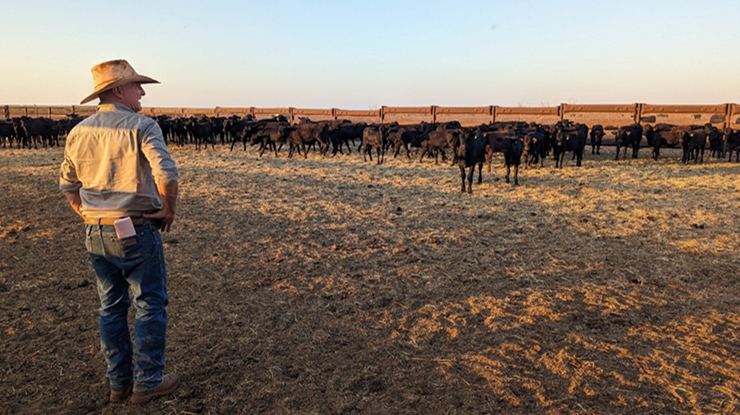 ‘Pardoo Station’ manager Jeff McInnerney with weaner heifers.
‘Pardoo Station’ manager Jeff McInnerney with weaner heifers.
Eye on market drives Pardoo’s productivity
The WA-based beef business ‘Pardoo Station’ is on track for significant productivity benefits through enhancements to its strategic breeding practices and astute market optimisation initiatives.
Pardoo Station, managed by Jeff Mcinnerney, is located 200km north of Port Headland and 450km south of Broome – spanning more than 200,000ha along the coastline. It’s part of Pardoo Wagyu business aggregation – owned by Bruce Cheung – which also includes ‘Fairfield’ and ‘Leopold’ stations.
The station’s pastures include rhodes and panic grass hay which are grown under irrigation pivots. Chicory is also cultivated and there are plans to add sorghum to the rotation. The property features a mix of sandplains and dunes, with acacia shrublands and spinifex.
Herd composition
Pardoo Station is primarily focused on breeding Wagyu and Wagyu-cross cattle. There is a current headcount of 2,400 cattle grazing on the rangelands and another 2,800 head on feed, many of which are awaiting pregnancy tests after artificial insemination (AI).
After recently being awarded freehold status, Pardoo’s owners applied for a 10,000 head feedlot, where their Wagyu and Wagyu-cross cattle will be backgrounded before they are trucked to finishing feedlots.
The breeding plan includes predominantly Droughtmaster and Brahman cattle crossed with Wagyu to produce a northern Wagyu-cross breed. In the feedlot, purebred Wagyu cattle gain an average of 0.8kg per day, while first-cross cattle gain around 1.1kg/day. Liveweight is monitored using the Optiweigh system and feed is adjusted to determine the most effective ration for weight gain.
Breeding management
Breeding practices include AI for first-calf heifers. Any identified as dry following pregnancy testing are moved to a northern station and sold.
AI conception rates at Pardoo Station have been as low as 40% and up to 65% – overall conception rates reached 78% after covering bulls were introduced after AI. First calf heifers receive supplementation and cows are managed to maintain body condition score 3 to 3.5 for breeding and AI programs.
Vaccination practices include a 5-in-1 vaccine for steers, a 7-in-1 for heifers and a botulism vaccine for all cattle. Bovi-Shield® is also part of the vaccination regimen for all pure breed weaners. Tri-Solfen® is used for pain relief during procedures such as branding, dehorning and castrating. See Table 1.
Table 1: Pardoo Station’s vaccination schedule
|
Vaccination |
Class |
Frequency |
|
Longrange® Botulinum Vaccine |
All cattle |
Yearly |
|
Bovi-Shield® Mh-One |
All PB Weaners |
At weaning |
|
Ultravac®7in1 |
All females |
Yearly |
|
Ultravac®5in1 |
Steers |
Yearly |
|
Vibrovax® |
Joiner heifers |
Pre-joining |
Weaner management
There are two rounds of mustering at Pardoo Station, one in June/July and the second in September. The station employs a controlled mating cycle with an 80-day joining period from April to June, aiming for calving in January and weaning in August.
Weaning management involves an 8–10-day yard education period which uses dogs and horses in yard and paddock education. Calves are then moved with horses to further acclimate them. Calves are weaned between 110kg–200kg, averaging around 135kg.
They are segregated by weight, with smaller weaners under 150kg and larger ones above 150kg.
Larger weaners are fed a mix of silage and imported grains - consisting of barley, lupins and maize. Milne weaner pellets and hay grown onsite are fed to the smaller weaners to boost nutrition. The target calf mortality rate is less than 10%.
Post-weaning, weaners stay in feedlot-type yards. Males are aimed to be shipped at weights of 320kg–340kg in July and September, while F1 females are joined at 280kg in February. Dry F1 females remain on feed until reaching the target heifer weight of 300kg–340kg for live export. Pregnant heifers are sent to a co-operative station further north in the Kimberley after testing, and purebreds, if not pregnant, go south into a long-fed program.
The station targets both domestic and export markets, such as the Indonesian market. Pardoo Station is European Union (EU) market certified, though they must truck cattle from WA to the east coast for long feeding as there are currently no EU-certified feedlots WA.
Term and technology
Labour at Pardoo Station includes a crew of around 20 staff, divided into feedlot, cattle crew, pivot management and fencing contractors.
The station operates irrigation pivots, though some have yet to be restored after a cyclone in 2023.
Outlook
Future opportunities at Pardoo include continued optimisation of feed rations to enhance weight gain and expansion of market opportunities, especially focusing on the Indonesian market and new EU certifications.
Currently, the business purchases up to 400t of grain/year at a cost of around $2.9 million, which is expected to decrease to around $1 million under their new feed program.
The enterprise has an end goal of developing its feed program to include growing barley and white sorghum for silage, reducing the requirement to purchase outside grain to zero, at which time they will have internal growing costs only.
Under Jeff’s management, Pardoo Station is poised for a bright future in the cattle industry with strategic breeding practices and market optimisation efforts.
Jeff offers some words of wisdom for other producers.
“Trust your experiences. I’ve been out of the farming game for a while, but I used to do it quite a bit and I don’t hesitate to ask the experts when I don’t know.”



